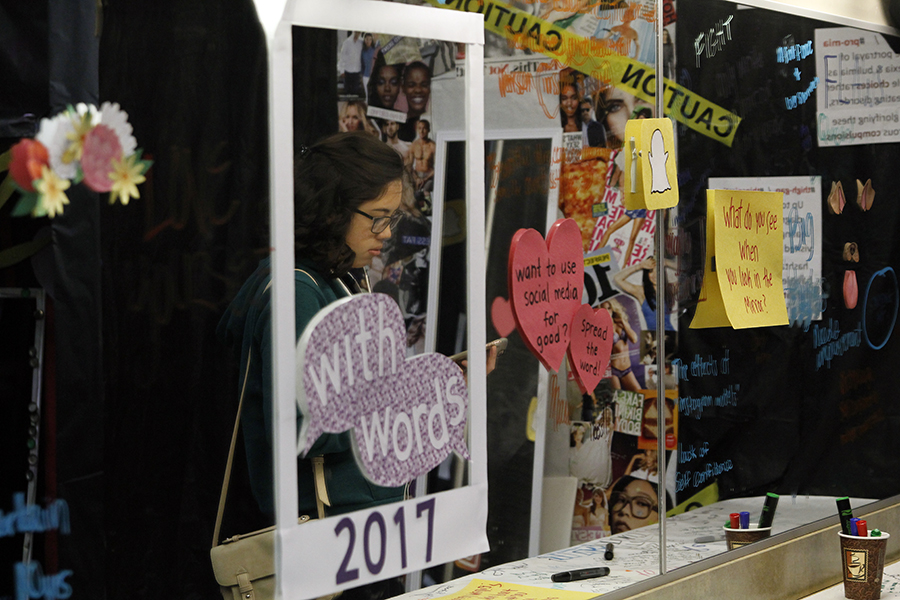With Words invites you to join the conversation
Is water a human right?
That is just one of the profound questions asked at FSU’s annual With Words exhibit. With Words is a museum-style exhibit that aims to educate, inspire compassion, create meaningful conversations, and provide a call to action on multiple domestic and global social justice issues to members of the Florida State and Tallahassee community. The exhibit ends today at 2 p.m. and is focused on issues including the criminal justice system, gentrification, water crisis and social media.

When walking through the exhibit, participants are met with an array of statistics, striking physical displays, and multiple sensory experiences. On a wall discussing household water usage, a pair of simple blue jeans is pinned down with a sign explaining that the average pair of blue jeans takes approximately 2,900 gallons of water to produce. Farther down the hallway, the sound of dripping water echoes from a dim room. The room, bathed in blue, is filled with plastic bags and displays of aquatic animals, in a representation of the Pacific Gyre Garbage Patch.
Displays such as these are layered throughout the exhibit in hopes of allowing participants to go beyond engaging with the statistics and connect with the significance of the issue.
At the start of the criminal justice system segment one sign reads, “ Stop. You are under arrest. Remove your name tag and pick up a prisoner number.”
For the rest of the section, participants engage with the information surrounding the criminal justice system as a criminal reduced to no more than a number. They are confronted with quotes from prisoners, a timeline of criminal justice laws, the range of sentences for various crimes, the school to prison pipeline, and the stories of those wrongfully killed through the criminal justice system.
Within each section of the exhibit there were spaces dedicated to creating change. Participants are asked to think about how they can create change for each particular issue because even if they personally are not affected, they can be inadvertently creating the issue for other people.
College students, members of the LGBTQ community, women, artists, young people, the politically progressive, and people of color can be counted among many inadvertent perpetrators of gentrification. The exhibit explains that when medium or high-income gentrifiers enter a low-income district they increase the property values of the areas surrounding them. This can lead to the displacement of the lower income families and small business owners within the community and change the culture of the district. This issue is expanding as urban districts become revitalized to attract more affluent residents and is often not recognized by those perpetuating the issue, according to the exhibit. Within the Tallahassee community, the luxury student housing developments in Frenchtown were highlighted as a prime example of gentrification.
This section asks participants to consider, “How do beauty standards affect our cities?”
Beyond the beauty of our communities this exhibit also explores the issues surrounding beauty and social media. As participants walk through the social media section, they are confronted with questions on how they view themselves and their own beauty. Mirrors surrounded with gym equipment, beer bottles, and beach gear are used to represent how people portray themselves on social media sites.
The back mirror wall promotes the questions, “What do you see when you look in the mirror? How is what you see in the mirror different than what you see in social media?”
Confronting issues and becoming more aware of self-esteem, cyberbullying and its effects, social media movements, and social media addiction are the main goals of the social media section. There are multiple areas dedicated to writing down personal thoughts on how social media affects perception of others and yourself, what you experience when using social media, and the hateful messages that you have received online.
With Words is a way for the community to engage with issues that are prevalent within our national and global spheres. The hope is that participants will walk away more informed, ready to join the conversation, and open to creating positive change.
— Talise Burton


